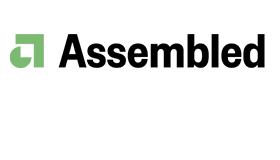Sam Dehart at Assembled explores practical strategies for agent scheduling by balancing operational efficiency with agent satisfaction.
As workforce managers, it’s our job to balance the needs of the business with operational efficiency while fostering a positive work environment for our agents.
This can sometimes lead to tough decisions, like denying time-off requests or schedule changes. However, saying “no” doesn’t have to create friction or tension.
By adopting a more thoughtful approach, we can find ways to say “yes” more often, creating an environment where agents feel supported and valued without compromising the overall efficiency of the operation.
Agent Scheduling Best Practices
Effective agent scheduling isn’t just about maintaining operational efficiency; it’s about creating a work environment that empowers your team and aligns with their needs.
By implementing these best practices, you can strike the right balance between business requirements and agent satisfaction, fostering a more engaged and productive workforce.
Get Ahead With Advance Schedule Publishing
Giving your team the ability to plan their lives outside of work starts with providing schedules well in advance.
When agents know their working hours weeks ahead, they can organize their personal time more effectively, leading to a healthier work-life balance.
We suggest publishing schedules at least two weeks in advance – ideally, a month or more. Not only does this empower your agents, but it also reduces last-minute call-outs and gives you a clearer picture of future coverage needs, making operations smoother for everyone.
Keep It Consistent for Agent Well-Being
Consistency is key when it comes to agent satisfaction. While it might not be feasible for every team, most agents thrive on having the same schedule day to day, week to week.
Regular days and start times help agents establish a routine that supports their well-being, making it easier to get quality rest and maintain a healthy work-life balance.
For operational teams, this is a win too. Well-rested agents are more focused and effective, and maintaining consistent schedules is simpler and more efficient.
Empower Choice With a Smart Shift Bidding System
Consistency is valuable, but not all shifts are created equal – and that’s where agent choice comes in. The reality is, everyone wants the prime slots, like 10 a.m. to 8 p.m. Monday through Thursday, leaving other critical times under-covered.
A well-structured shift bidding process can help balance these needs. By allowing agents to select their preferred shifts for a set period (typically 3-6 months), you can align schedules with both agent preferences and operational demands.
Not every agent will get their top choice, but transparency is key. Clearly communicate how shifts will be distributed – whether it’s based on merit, seniority, or first-come, first-served.
Setting these expectations upfront makes it easier to manage any disappointments and shows agents how they can aim for their preferred shifts in the future.
Define Flexibility With Clear Expectations
Flexibility is essential for any team, whether it’s PTO or intraday adjustments. Setting clear expectations around flexibility ensures that agents have the best chance of getting the “yes” they’re hoping for.
Start by defining how far in advance you expect agents to request PTO or schedule changes, considering your capacity constraints.
When agents know the guidelines and follow them, they should feel confident that their requests are likely to be approved.
Boost Flexibility by Partnering With a BPO
Partnering with a BPO can be a game-changer when it comes to covering those challenging shifts – like nights, weekends, and holidays – that your internal team might struggle to fill.
If your team experiences friction around these less desirable times, a third-party partner can step in to ensure smooth coverage.
With a BPO on board, your agents can avoid shifts that don’t align with their preferences, while your admin team can relax knowing that there’s always someone to handle the workload.
Plus, schedule integration feature, incorporating BPO partners into your workforce management plan is seamless, with no need to worry about system compatibility.
Elevate Engagement With Regular Agent Input
Lastly, make it a priority to gather agent input early and often. While it’s not always possible to accommodate every request, simply asking for feedback shows your agents that their voices matter.
Consider setting up a feedback form or establishing regular check-ins focused on agent experience. You might be surprised by the small adjustments that can make a big difference – like responding to requests more quickly or allowing extra time for inbox catch-up. These insights can help create a more supportive and responsive work environment.
Bringing It All Together for Smarter Scheduling
By implementing these best practices, you can create a more efficient, agent-friendly scheduling process that benefits both your team and your operations.
From advance schedule publishing to incorporating agent input, each step is designed to foster a supportive and productive work environment.
This blog post has been re-published by kind permission of Assembled – View the Original Article
For more information about Assembled - visit the Assembled Website
Call Centre Helper is not responsible for the content of these guest blog posts. The opinions expressed in this article are those of the author, and do not necessarily reflect those of Call Centre Helper.
Author: Assembled
Published On: 20th Aug 2024 - Last modified: 22nd Oct 2024
Read more about - Guest Blogs, Assembled






 Assembled is a Support Operations platform that helps companies maintain exceptional customer experiences, no matter what lies ahead. Leading brands use Assembled's workforce and vendor management capabilities to make optimal staffing decisions, gain visibility into performance and productivity, and unlock new ways to serve evolving customer needs.
Assembled is a Support Operations platform that helps companies maintain exceptional customer experiences, no matter what lies ahead. Leading brands use Assembled's workforce and vendor management capabilities to make optimal staffing decisions, gain visibility into performance and productivity, and unlock new ways to serve evolving customer needs. 





























